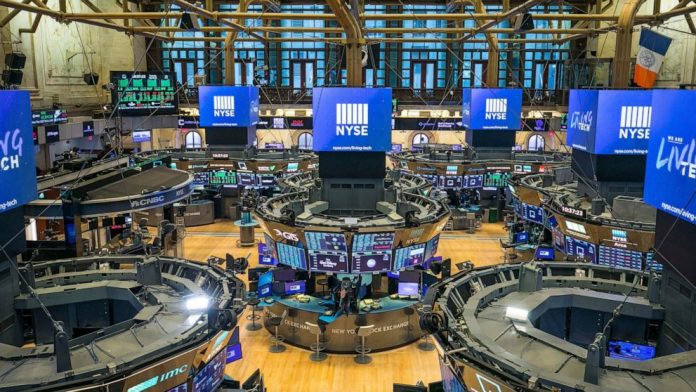
U.S. stock futures are rebounding after the U.S. government said nearly 3.3 million people filed for unemployment benefits last week, a dramatic indication of the impact of the coronavirus outbreak on the U.S. economy
U.S. stock futures are rebounding after the U.S. government said nearly 3.3 million people filed for unemployment benefits last week, a dramatic indication of the impact of the coronavirus outbreak on the U.S. economy.While the surge in weekly applications for benefits far exceeded the previous record set in 1982, the figure wasn’t as bad as some had feared.Futures for the Dow Jones Industrial Average were down nearly 500 points just before the jobless claims number was released. Just minutes later the loss had narrowed to around 200 points.The U.S. stock market notched its first back-to-back gains Tuesday and Wednesday on optimism surrounding actions by the Federal Reserve to support credit markets and the approval in the Senate of a $2.2 trillion economic aid package.
The S&P 500 is still down 27% from the high set on Feb. 19, and traders expect the market to remain volatile until the number of new cases of coronavirus levels off.
Filings for unemployment aid generally reflect the pace of layoffs. The pace of layoffs is sure to accelerate as the U.S. economy sinks into a recession.
Goldman Sachs is warning of another sharp drop in oil prices, saying some oil producers are eventually going to have to shut some wells because of dramatic decline in demand due to the coronavirus outbreak.
Goldman says demand for jet fuel and gasoline is deteriorating as governments restrict travel or would-be travelers stay home. This will result in storage for fuel filling to capacity, which in turn will result in a glut of crude oil, forcing a sharp pullback in production.
Analysts at Goldman say Brent crude, the international benchmark, will remain around $20 in the second quarter — down from $29 a barrel now — but the price of the U.S. benchmark should drop “well below $20 a barrel. U.S. crude is trading around $23.70 a barrel Thursday morning.
Global demand is expected to fall by 10.5 million barrels a day in March and 18.7 million barrels a day in April. While oil producers such as OPEC and Russia might try to offset that with production cuts, “We expect a demand shock of this magnitude to overwhelm any supply response,” the Goldman analysts say.
In their report, the analysts say that once demand comes back, the surge in oil prices could be dramatic because reversing a shut-in of production isn’t easy, and there could be a shortage once the existing supplies of jet fuel, gasoline and crude are used up.
Reported By: ABC News







